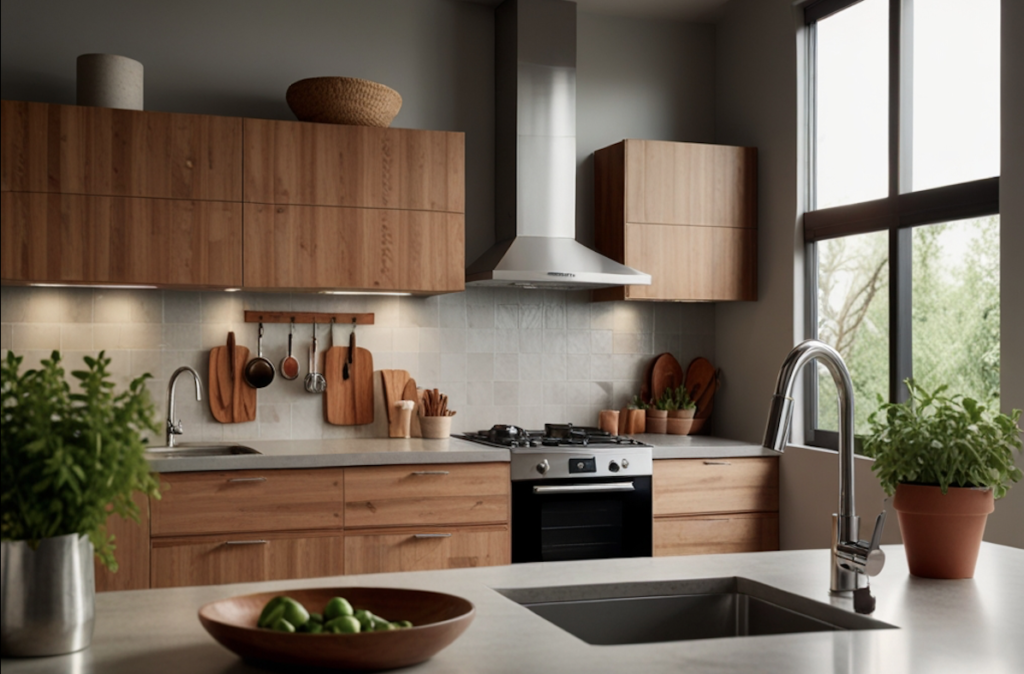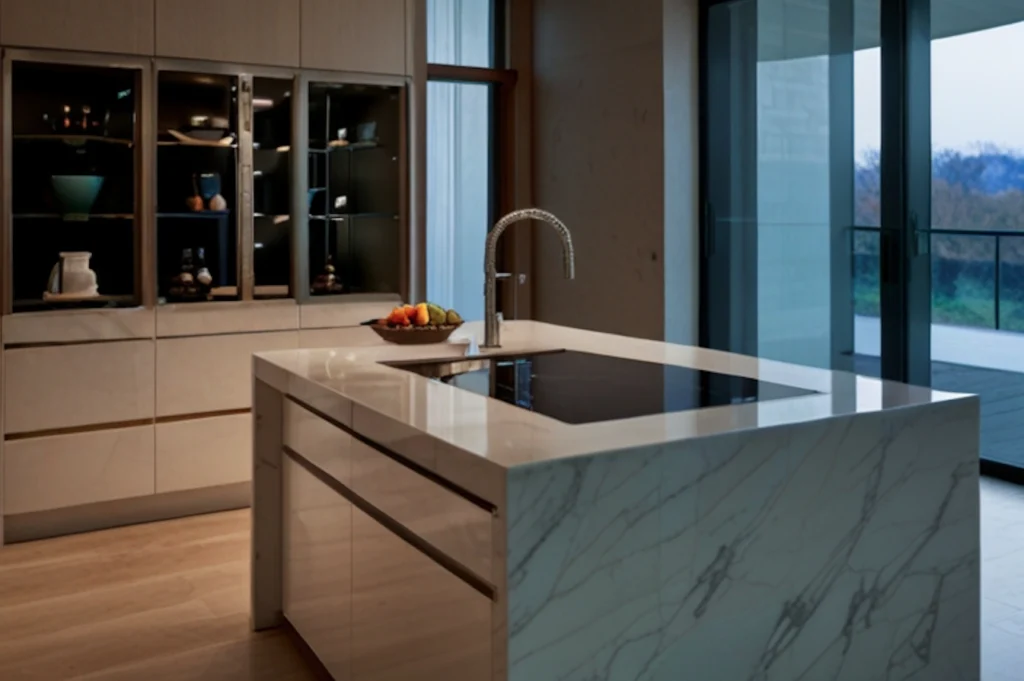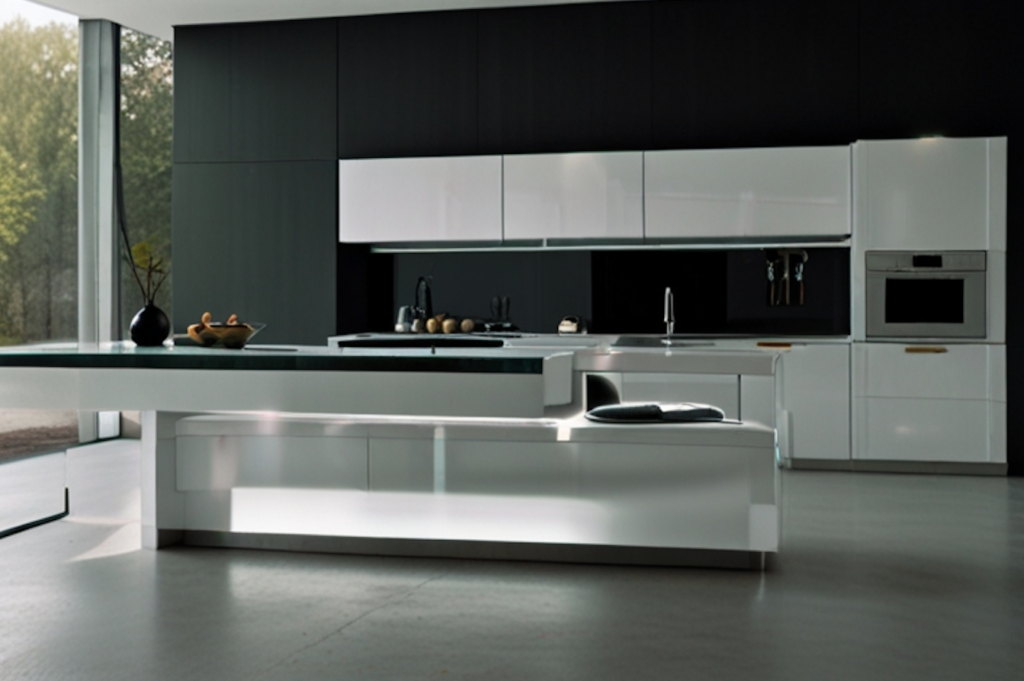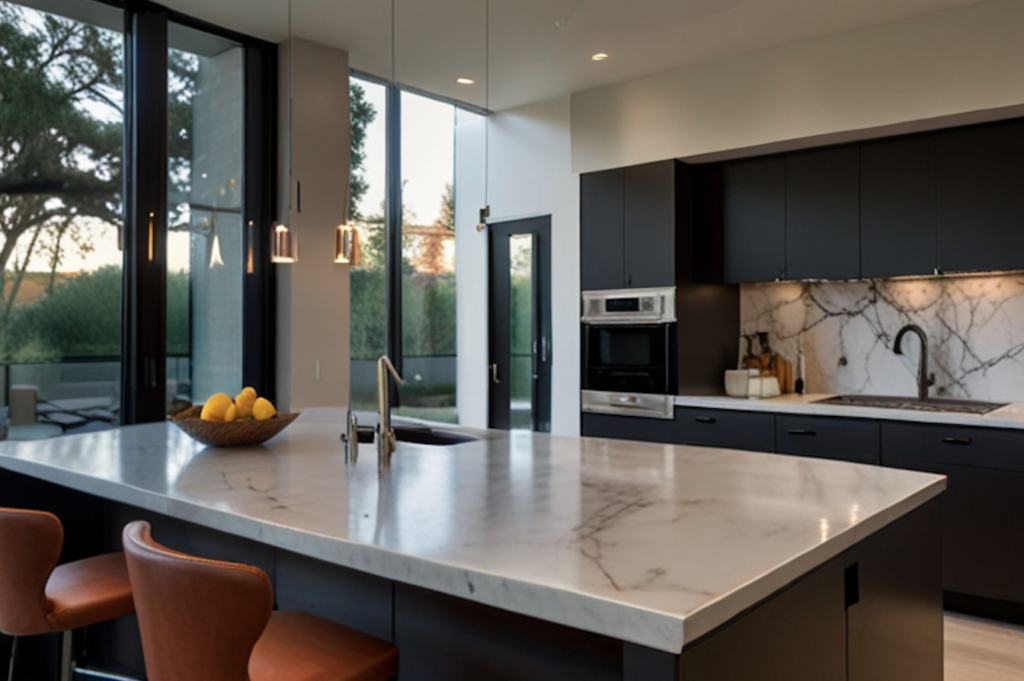The landscape of home design continues its dynamic evolution in 2025, propelled by both groundbreaking technological integrations and an intensified commitment to environmental stewardship. Spearheading this transformation in kitchen remodeling is the burgeoning concept of the “sustainable smart kitchen.” This innovative approach seamlessly merges state-of-the-art smart functionalities with a conscious selection of eco-friendly materials and responsible design methodologies.
For kitchen remodeling contractors operating in 2025, understanding and embracing the sustainable smart kitchen is no longer a niche trend but a growing expectation among homeowners, particularly in the high-end market. Clients are increasingly seeking spaces that not only boast cutting-edge convenience and connectivity but also minimize their environmental footprint. This demand presents a significant opportunity for contractors who can confidently navigate the intricacies of integrating smart technology with sustainable practices.
Creating a sustainable smart kitchen in 2025 offers a compelling array of benefits for homeowners. Imagine voice-controlled appliances optimizing energy consumption, smart water filtration systems reducing waste, and sustainably sourced cabinetry crafted from reclaimed wood adding both beauty and environmental responsibility. Beyond the tangible advantages, these kitchens resonate with a growing desire for conscious living and a reduced impact on the planet.
However, the path to realizing a truly sustainable smart kitchen in 2025 isn’t without its considerations. While the availability of eco-friendly and smart home technologies has expanded significantly, careful planning remains paramount. For instance, sourcing genuinely sustainable materials, such as Forest Stewardship Council (FSC) certified lumber or countertops made from recycled content, requires diligent research and established relationships with reputable suppliers. In 2025, contractors need to be adept at identifying and vetting these sources to ensure the authenticity and quality of the materials used.
Furthermore, the seamless integration of smart technologies demands a deep understanding of compatibility and installation requirements. In 2025, this goes beyond simply installing smart appliances. It involves designing a cohesive ecosystem where lighting, temperature control, security systems, and even waste management solutions communicate effectively. Contractors must collaborate with technology specialists and stay abreast of the latest advancements in smart home integration to deliver a truly seamless and user-friendly experience.
The Rise of the Sustainable Smart Kitchen
The sustainable smart kitchen is more than just a trendy buzzword. It represents a thoughtful approach to kitchen design that prioritizes both environmental impact and technological innovation. This concept integrates three key elements:
- Energy-Efficient Appliances: Smart appliances equipped with energy-saving modes and automated functions can significantly reduce your kitchen’s energy consumption. Look for appliances with ENERGY STAR® certification to ensure you’re choosing the most efficient models.
- Smart Features for Convenience and Control: Smart home technology allows you to control your kitchen appliances remotely, monitor energy usage, and even pre-heat your oven on your way home. This level of control not only adds convenience but also allows for more efficient energy management.
- Eco-Friendly Materials: Sustainable smart kitchens go beyond tech features by incorporating eco-friendly materials throughout the design. This can include countertops made from recycled content, cabinetry constructed from sustainably sourced wood, bamboo flooring, and energy-efficient backsplash materials.
The growing interest in sustainable kitchens is driven by several factors. Environmental concerns about resource depletion and climate change are leading many homeowners to seek eco-conscious solutions for their homes. Additionally, the desire for healthier living spaces is driving the demand for low-toxicity materials and improved indoor air quality.
Smart kitchen features also offer a variety of benefits beyond sustainability. Imagine being able to preheat your oven while you’re still at work, or receive a notification when your laundry cycle is finished. These features can save you time and energy, making your life in the kitchen more efficient and enjoyable.
Planning and Design Considerations for a Sustainable Smart Kitchen
Creating a beautiful and functional sustainable smart kitchen requires careful planning and design considerations. Here are some key areas to focus on:
- Layout and Workflow: A well-designed kitchen layout is essential for both functionality and efficiency. Consider a layout that promotes a smooth workflow, minimizing unnecessary movement between appliances and work zones. Think about the placement of your refrigerator, stove, sink, and prep areas in relation to each other. Smart features can further enhance your workflow. For example, some smart refrigerators can recommend recipes based on your existing ingredients, while smart ovens can be programmed to preheat remotely, saving you time when you’re ready to cook.
- Sustainable Materials: When choosing materials for your sustainable smart kitchen, there are a variety of eco-friendly options available. Here are some ideas to get you started:
- Countertops: Look for countertops made from recycled content, like recycled glass or concrete. Quartz is another popular option, as it’s durable, non-porous, and requires minimal maintenance.
- Cabinetry: Consider cabinetry constructed from sustainably sourced wood with Forest Stewardship Council (FSC) certification. You can also explore bamboo cabinetry, a fast-growing and renewable resource.
- Flooring: Cork flooring offers excellent comfort underfoot and sound absorption, and is a naturally renewable resource. Bamboo flooring is another sustainable choice with a beautiful aesthetic. Always ensure proper sealing for both cork and bamboo in high-moisture areas like kitchens.
- Backsplashes: Recycled glass tiles and reclaimed brick are unique and sustainable options for backsplashes. Stainless steel is another durable and easy-to-clean choice.
- Smart Appliance Integration: When selecting smart appliances, ensure they are compatible with your chosen smart home system. Look for features that align with your lifestyle and cooking habits. For example, if you’re an avid baker, a smart oven with precise temperature control might be a valuable investment. Conversely, if you’re often short on time, consider appliances with fast cooking options or automated meal preparation functions.
These planning and design considerations can help create a sustainable smart kitchen that is not only eco-friendly but also perfectly tailored to your needs and preferences.
Challenges and Solutions: Sourcing Sustainable Materials
While the number of eco-friendly materials available for kitchens is growing, there can still be challenges associated with sourcing them, particularly for those aiming to minimize their environmental footprint. Here are some common hurdles and solutions to consider:

- Hard-to-Find Materials: Certain sustainable materials, especially those made from recycled content or sourced from distant locations, may not be readily available in all areas.
- Solution: Embrace local sourcing whenever possible. Local lumberyards or stone suppliers may offer sustainable options grown or manufactured closer to your home, reducing transportation emissions.
- Cost Considerations: Some sustainable materials can have a higher initial cost compared to traditional options.
- Solution: Consider the long-term benefits. Sustainable materials are often more durable and require less maintenance, potentially saving you money over time. Additionally, explore financing options offered by some suppliers to help manage the initial investment.
- Knowledge Gap: You may encounter contractors or suppliers who are unfamiliar with sustainable materials or their installation requirements.
- Solution: Do your research and come prepared with specific product information and installation details. Seek out contractors and suppliers experienced with sustainable kitchen projects. Organizations like the U.S. Green Building Council (USGBC) offer resources to help you find qualified professionals.
By being proactive and informed, you can overcome these challenges and source the perfect sustainable materials for your dream kitchen.
The Future of Sustainable Smart Kitchens
The future of sustainable smart kitchens is brimming with exciting possibilities. Advancements in smart technology promise even greater levels of efficiency and convenience. Imagine self-replenishing pantries that automatically order groceries when supplies run low, or ovens that can perfectly cook a meal based on your nutritional preferences. At the same time, innovations in sustainable materials science are constantly emerging. We can expect to see even more durable, eco-friendly options that offer superior performance and aesthetics. Sustainable smart kitchens represent the future of kitchen design, combining innovation with environmental responsibility to create functional, stylish, and eco-conscious spaces for modern living.
Conclusion:
In conclusion, creating a sustainable smart kitchen is an investment in both your wellbeing and the planet. By carefully considering planning, design, and sourcing strategies, you can design a kitchen that is both functional and eco-friendly. Embrace the latest smart technology for convenience and efficiency, while selecting sustainable materials that minimize your environmental impact. The future of sustainable smart kitchens holds incredible promise, offering a vision of kitchens perfectly integrated with technology and designed with a deep respect for our planet. So, embrace innovation and sustainability, and get ready to cook up something amazing in your dream sustainable smart kitchen.




